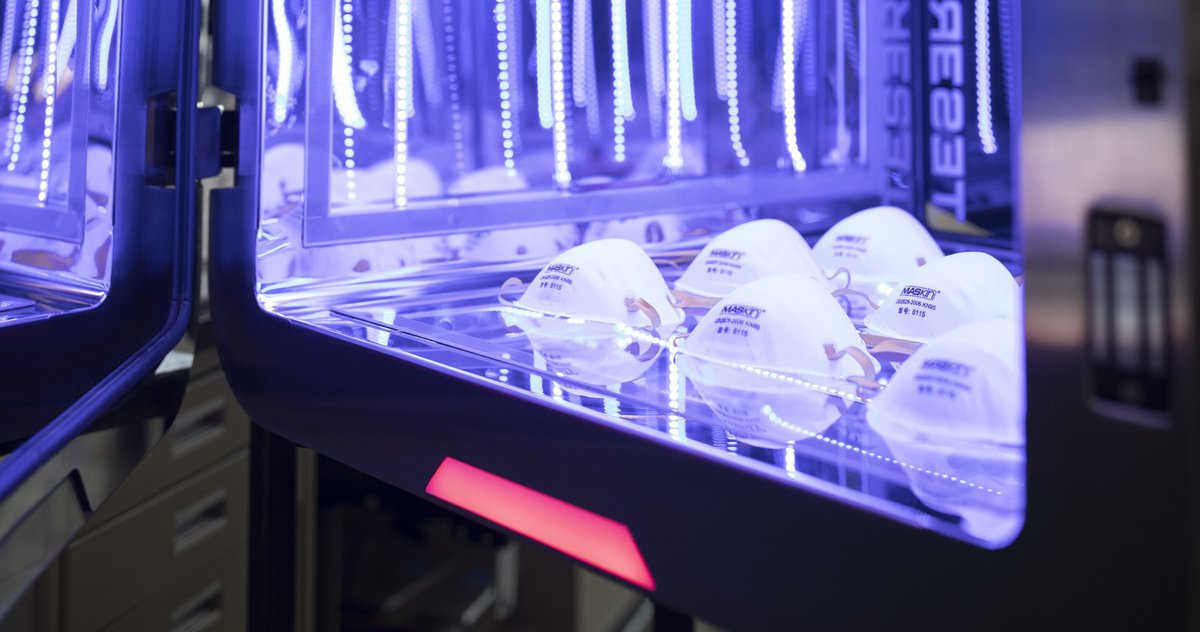While Canada – and the world – continue to grapple with the challenges of progressive re-openings, one Alberta-based company has turned their perspective skywards and tweaked an old solution to tackle a new problem by harnessing the power of the sun.
The concept is straightforward and relies on ultraviolet rays, specifically UV-C, which are more intense and shorter in wavelength compared to UV-A and UV-B. While all these wavelengths are generated naturally from the sun, UV-C is found minimally on the earth’s surface as it’s absorbed by the ozone layer. And for good reason: unlike UV-A and -B, UV-C is much more damaging to our cell’s DNA, and we wouldn’t want to bask in it on a summer – or any other – day.
Since the mid-20th century, germicidal applications using UV-C technology have been used in consumer and industrial settings. You might have seen these nifty gadgets before, usually in the form of mini portable water sterilization devices marketed toward backcountry adventurers. It works especially well in these applications because UV-C decontamination requires direct line of sight between the contaminate and the energy source.
Due to the sudden shortages of personal protective equipment and reliable decontamination methods, there is renewed interest in repurposing UV-C techniques to tackle COVID-19. Much like washing your hands, the germicidal effectiveness of UV-C depends on the time and frequency of exposure. The longer the exposure time, the more potent its decontamination abilities.

For Calgary-based start-up Teser Technologies CEO Phil Alle and his colleague Chris Eastham, versatility and practicality are key. Adapting their experience from the petroleum steel manufacturing industry, the Teser team have created Teser Advanced Cleaning Technology, an accessible and easy-to-use UV-C decontamination chamber. As the COVID-19 pandemic grew, they found a practical application for this microwave oven-sized device in decontaminating limited PPE supplies. While Phil and Chris are not medically trained professionals, they have the advantage of being experts in project management, design and manufacturing. They have partnered with local experts from organizations such as Alberta Innovates, the University of Alberta and InnoTech Alberta.
Eastham says, “In my mind, the new normal was essentially going back to the basics everyone was taught as a child: wash your hands regularly, stay away from those who are ill, and properly cover your mouth when coughing or sneezing. As a world, we must come together to reset and remember basic hygiene. From there, Teser Technologies was created from ‘reset’ spelled backwards."
Their solution to the UV line of sight challenges is ultimately a practical one – by having a 360-degree view and adjusting the intensity and exposure time, they have been able to decontaminate and repurpose N95 masks for multiple uses. Currently, powered by standard 120 V wall outlets, they can process roughly 16 masks every two minutes.
Although complete surgical sterilization is difficult for UV-C technologies to achieve, that is not the short-term goal of Teser’s ACT device. The main advantage of this solution is to provide point-of-care decontamination to reduce microbial loads to safe levels. High-use personal devices such as stethoscopes and smartphones can be automatically decontaminated upon entry and exit of a patient’s room, reducing the cost of human labor needed to physically clean the object.
Advantages of the device are not simply in direct cost savings. By increasing the reusability of traditionally disposable PPE to even three to four times its average lifespan, you can reduce the amount of medical waste that ends up in our environment while increasing the overall pool of available equipment. Increased reusability also frees us from our reliance on tenuous and politicized PPE supply chains. There is also the side benefit of easing our natural tendency to hoard and stockpile PPE, decreasing the costs associated with their storage, allocation and transportation.
At the time of writing, the Teser team has started commercial production runs from the Calgary workshop with final regulatory approvals for COVID-19 applications expected in the next few weeks.
For those interested in learning more, Teser has released a short video that shows the ACT device in action: https://www.youtube.com/watch?v=Zky5uvu6kVQ
Author's disclaimer: I have no personal or professional financial involvement nor do I receive any financial benefit from the organizations mentioned in this article.
Editor’s note: The views, perspectives and opinions in this article are solely the author’s and do not necessarily represent those of the AMA.
Banner photo image credit: Teser Technologies
